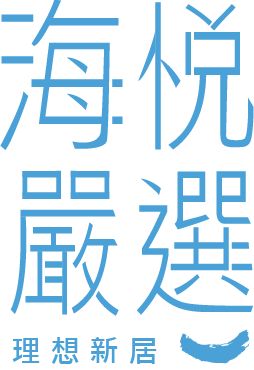In this instance, the Shape interface defines the strategy draw that might be adorned. In this instance python design patterns, the Shape class is the abstraction class, and RedCircleAPI and GreenCircleAPI are the implementation courses. The CircleShape class is the object that uses the abstraction and implementation classes, and is able to attract circles in both purple or green by using the api area. The implementation class may be modified at runtime, allowing the implementation of the item to be modified without affecting its abstraction. In this instance, the AudioPlayer class is the client that desires to play a selection of audio file codecs.
Introduction To Kotlin Practical Programming (part
This allows the code to deal with particular person objects and compositions of objects in a uniform method. Proxy design patterns are one of many structural design patterns in Java and are the simplest sample to understand. It additionally intent in accordance with GoF Provide a surrogate or placeholder for one more object to regulate access to it.
Kinds Of Behavioral Design Patterns:
For example, I lately made an ODM (Object Data Mapper) for MongoDB utilizing this sample where I wrote a proxy round mongo classes while using the magic method __call(). In real-time applications, typically we need to change the construction of a class or the connection among the classes, however we don’t need this alteration to be affected by the project. And the Product class is used contained in the User class making one-to-many relationships between the User and Product.
Design Patterns #3 – Structural Design Patterns
Behavior design patterns will define a weblog by its use cases (scenarios) utilizing decrease level enterprise objects such as Article/ArticleToImage/Image/ArticleToComment. The business objects usually are not aware of each other and are “maneuvered” into place by the scenario logic. Structure design patterns will define a weblog by defining its constituents as higher stage business objects similar to Article/Image/Comment.
Forms Of Structural Design Patterns
In this article, we will discover some generally used Java structural design patterns and perceive how they can improve the overall structure of software techniques. The Composite sample is a structural design sample that permits you to compose objects into tree structures and deal with individual objects and compositions of objects uniformly. The sample includes creating a Component class that defines the interface for objects in the composition and a Composite class that implements the Component interface and stores baby elements. These structural design sample in Java permits you to create a category structure in quite so much of methods, for as, by leveraging inheritance and composition to interrupt down a huge object into smaller items. These Java structural design patterns combine numerous classes and objects to create bigger structures with new capabilities. In this article, we are going to delve into various structural design patterns in Java and discover their practical applications in software program improvement.
The Facade sample hides the complexity of the subsystem and exposes a simplified interface to the consumer. The sample for saving reminiscence (basically) by sharing properties of objects. Imagine an enormous number of related objects which all have most of their properties the same. It is natural to maneuver these properties out of these objects to some exterior data construction and provide every object with the link to that information structure.
The MediaPlayer interface defines the play methodology that the consumer must name to play an audio file. The AdvancedMediaPlayer interface defines the strategies for enjoying extra superior audio file codecs, corresponding to VLC and MP4. The VlcPlayer and Mp4Player courses implement the AdvancedMediaPlayer interface and supply the actual implementation for enjoying VLC and MP4 files, respectively.
- By distinction, the Flyweight pattern is typically used when there’s a want to minimize reminiscence usage by sharing data between objects.
- Developers can employ these patterns to reinforce code maintainability, promote reusability, and obtain a modular and scalable architecture.
- In that case, you’ll find a way to simply reuse that composite object in one other doc.
These patterns are used to handle the relationships between entities efficiently. In this article, I will give a quick introduction to Structural Design Patterns in C#. Please read our previous part articles, the place we discussed the Creational Design Patterns in C# with examples. As a part of this text, we’re going to talk about the next three issues.
In this article, we’ll discover the Facade Pattern in Java with real-world examples and step-by-step implementation. The Bridge Pattern decouples an abstraction from its implementation, allowing each to range independently. It provides a way to separate abstraction and implementation hierarchies, making the system more flexible and simpler to maintain. In this article, we’ll explore the Bridge Pattern in Java with real-life examples and step-by-step implementation. Class patterns broaden the buildings in software program projects by combining class interfaces or purposes by utilizing inheritance. Object patterns assist customers to create new objects by combining present objects in order that the objects gain properties.
A proxy, in its most general form, is a class functioning as an interface to something else. A proxy is a wrapper or agent object that is being referred to as by the consumer to entry the real serving object behind the scenes. Use of the proxy can merely be forwarding to the actual object, or can provide additional logic. Chances are, you’ve used many of those patterns without realizing it—like MVC, MVVM, Singleton, and Observer. The Model-View-Controller paradigm is touted as an example of a “pattern” which predates the idea of “design patterns” by a number of years.
SLF4J (Simple Logging Facade for Java), the logging framework offers a facade or simplified API for numerous underlying logging implementations, similar to Logback, Log4j, and Java Util Logging (JUL). It uses the Facade Design Pattern to abstract away the differences between these logging systems and provides a unified logging API for builders. The Bridge Pattern separates the abstraction (Shape) from the drawing implementation (DrawingAPI). Different platforms, similar to Windows and Linux, can have their own implementations of DrawingAPI, and Shape can use these implementations without needing to alter its code. Using the proxy sample, a category represents the functionality of one other class. That is what you believe since you are using a easy interface that pc provides on the skin, internally it has to do lots of stuff to make it occur.
Finally, the “Proxy” pattern hides the bodily location of the object from the user. So you are working on a new software project and about to achieve the testing part.That’s nice news! If you need to study more in regards to the Proxy pattern, see a real-world code instance, then try this article. If you need to be taught extra concerning the Flyweight pattern, see a real-world code instance, then check out this text. If you wish to learn more about the Facade sample, see a real-world code example, then check out this text. If you need to be taught more about the Decorator sample, see a real-world code example, then check out this text.




